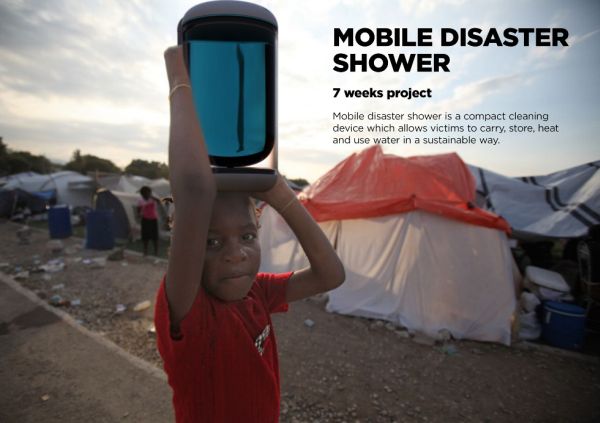Relief operations after a natural calamity should provide victims with adequate sanitation facilities apart from supplies like food, shelter and clothing. This helps to safeguard health of all victims and also prevents outbreak of diseases. Not all refugee camps and temporary shelters built have adequate amenities for bathing, therefore the mobile shower was built to aid victims of such disasters. The compact and portable device has a water storage facility and you can easily use its sprinkler in any place desired.

It doesn’t cost much to manufacture this eco friendly product and the device also uses water efficiently. Moreover, the shower is durable and features like easy drying and dirt resistance ensure that it stays hygienic. It has a cylindrical body with a transparent outer wall and a semi transparent inner wall. On the top is a cap that holds the handle and showerhead. A hose roll is attached to the base along with the manual pump and pedal pump.
Using this shower is really easy and the simple design is self explanatory. Fill it with water and leave it in the sun to heat up. Unscrew the cap and pull out the hose to connect it with the showerhead and release the pump to enjoy the shower. The shower can be carried around easily using the top handle. The cylinder can store 12 liters of water that reaches optimum temperature after it is exposed to sunlight for half an hour.
Most of the water sources in disaster struck areas are contaminated. Keeping this in mind a water purification technique has also been deployed in the compact shower. The WHO (World Health Organization) recommended scheme of Solar Water disinfection is used in here. This method uses UV-A rays as well as heat from infrared rays to kill the bacteria commonly found in water. The vacuum between the two layers of the cylinder creates insulation and prevents transfer of heat. The transparent layer on the outside allows sun rays to pass through, which are absorbed by the inner semi transparent layer to heat the water.
Via: Cargo collective


